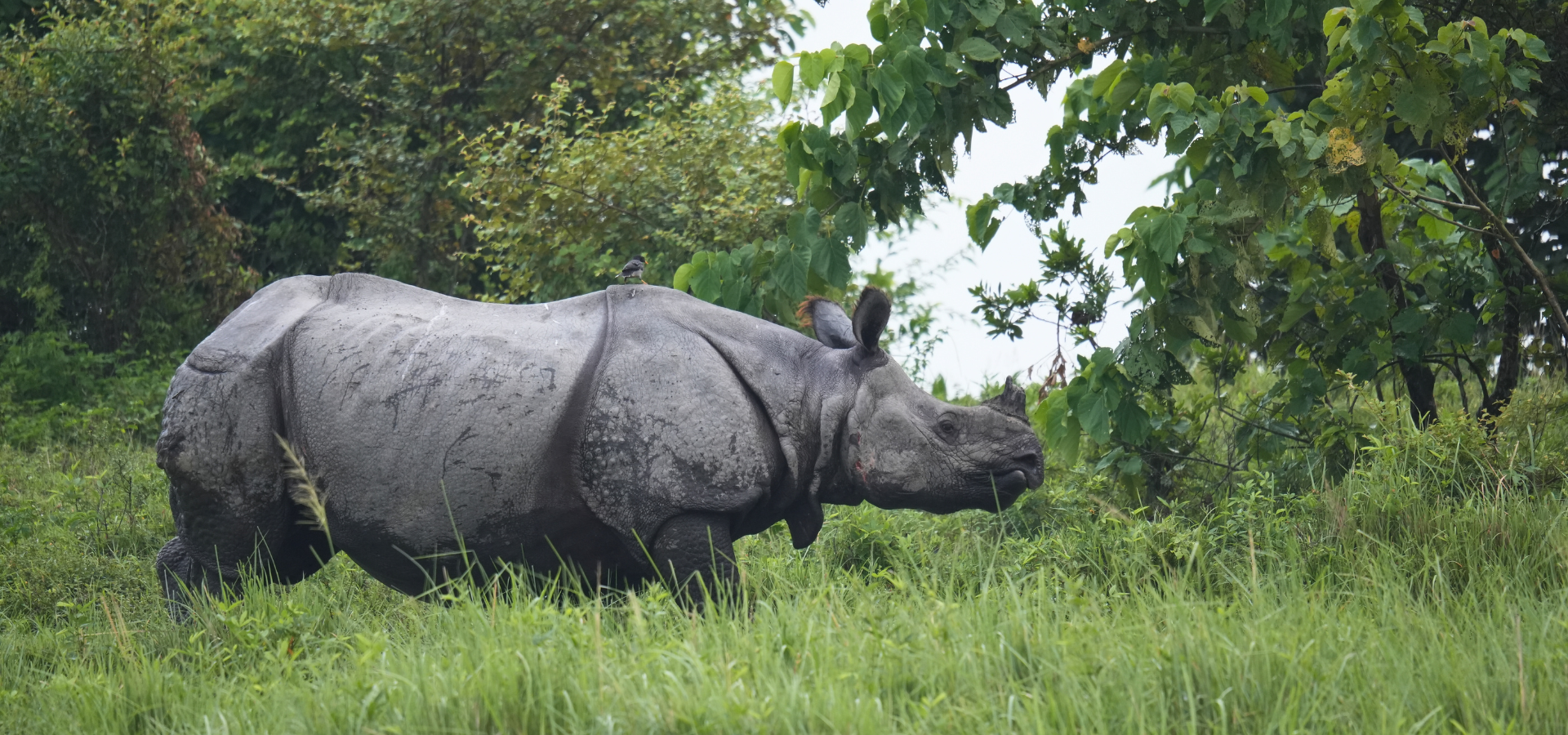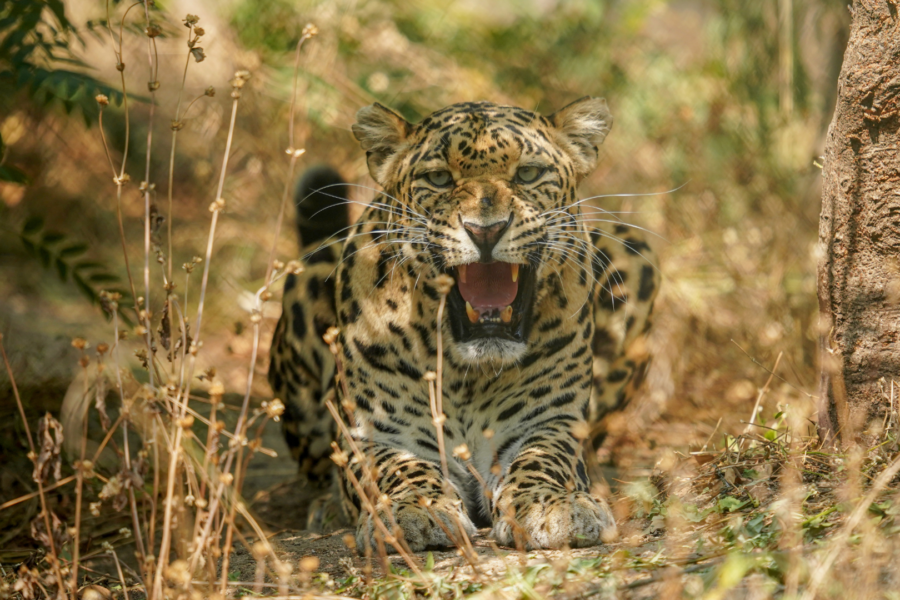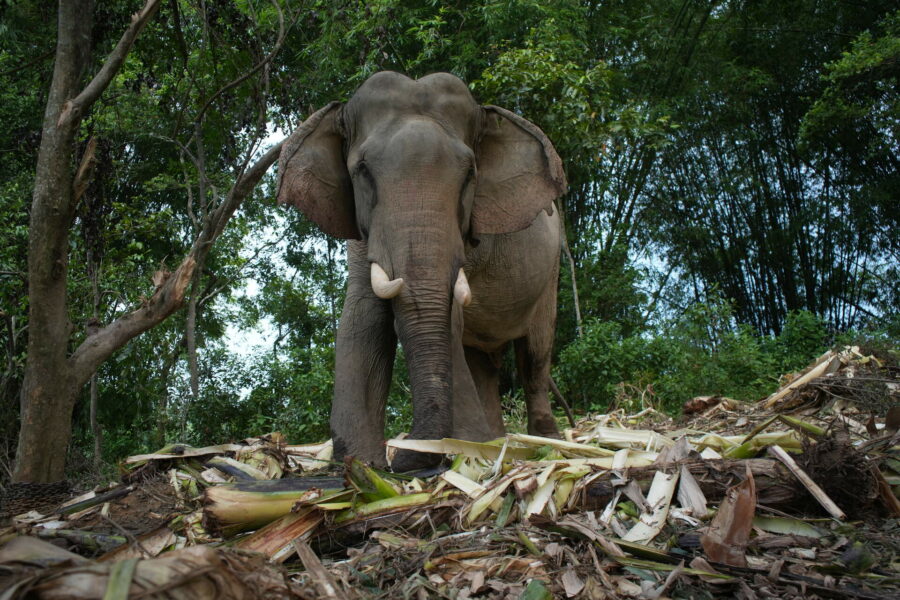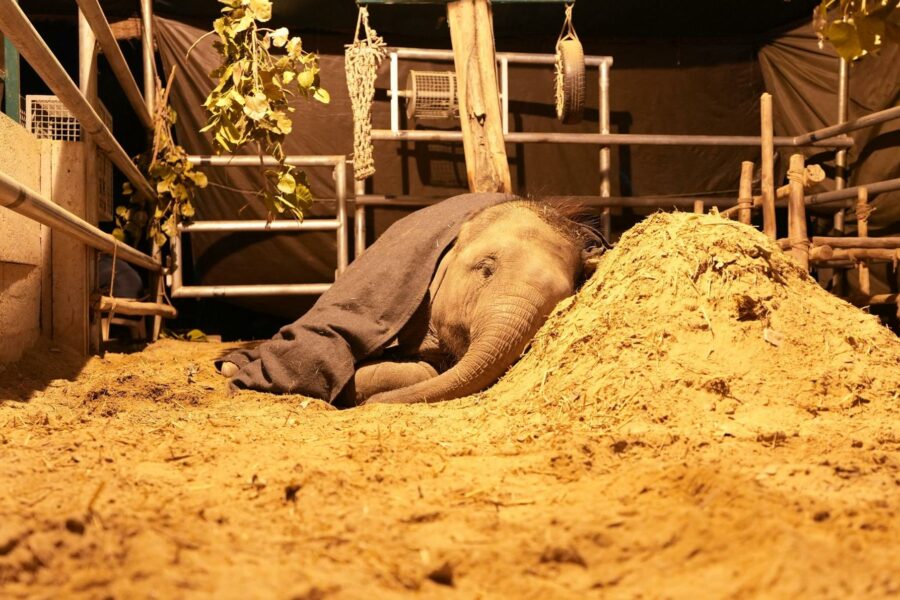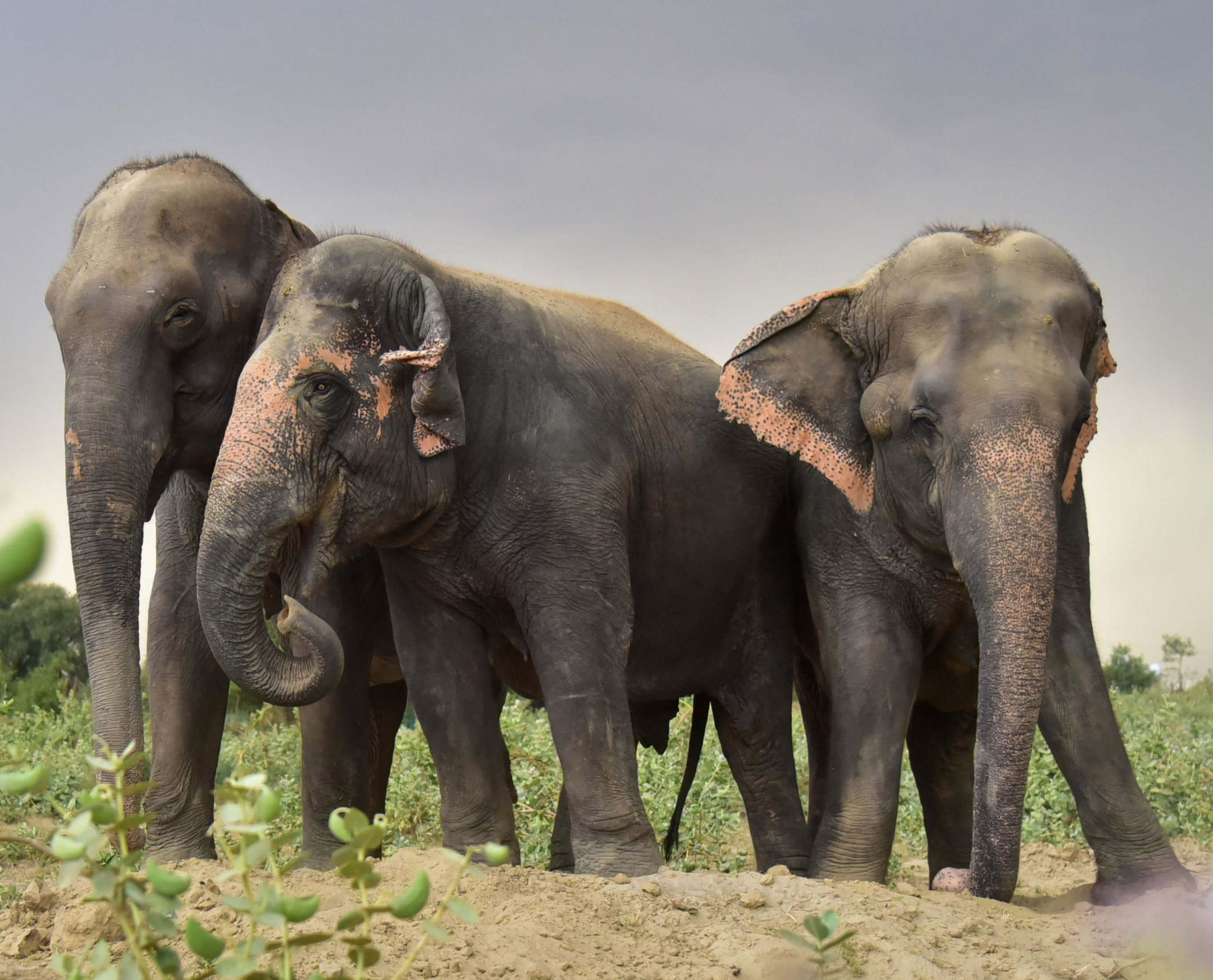Wildlife SOS introduces a series “Things You Didn’t Know About” that explores fascinating and lesser-known facts about various species. Our writers will spotlight one inhabitant of the wild, unveiling its unique characteristics and roles in the ecosystem. In this feature, we focus on one of the most interesting, magnificent and large mammals to roam the Earth — the rhinoceros.
What comes to mind when you think of a rhino? Perhaps you picture a giant beast with thick skin or a powerful creature with a horn, ready to charge at any moment. While these perceptions hold partial truth, rhinoceroses are far more than just their imposing looks. These enigmatic giants roaming our planet are extraordinary animals with a captivating presence.
Did you know that there are five distinct species of rhinos that exist? Here is who they are:
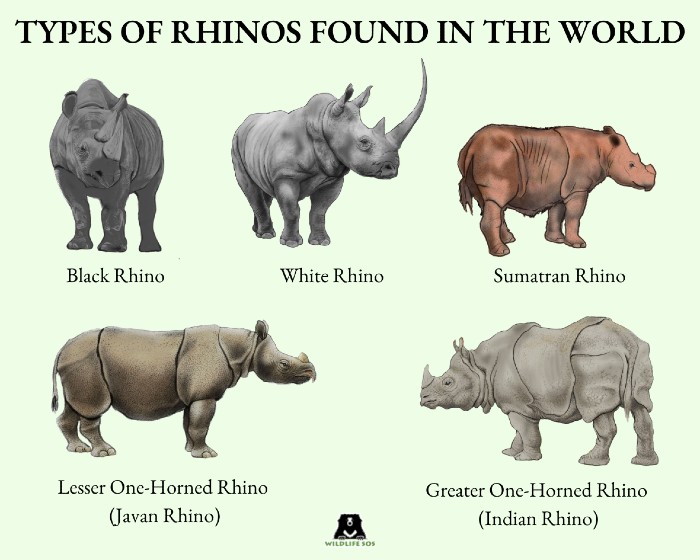
- Black Rhino – scattered across Kenya, Namibia, South Africa, Tanzania, Zimbabwe, Botswana and Chad
- White Rhino – a massive presence across Southern Africa
- Sumatran Rhino – the smallest of all five rhinos, this is now a rarely spotted species in Sumatra and Borneo
- Lesser One-Horned Rhino (Javan Rhino) – also called lesser one-horned rhino, and found only in the jungles of Java, Indonesia
- Greater One-Horned Rhino (Indian Rhino) – also known as the Indian rhino, is the largest rhino species which is found in the grasslands of India and Nepal

- Rhinos are herbivores and the different types of their habitats are grassland plains, savannah, woodland, true tropical forests and swamps. [Photo (C) Wildlife SOS/ Hemanta Bijoy Chakma]
When it comes to their horns, the greater one-horned rhino and the Javan rhino have one, while the white rhino, black rhino, and Sumatran rhino bear two. However, there’s so much more to these prehistoric-looking giants than what meets the eye. In this blog, we’ll uncover five jaw-dropping and lesser-known facts about rhinos that will forever change how one sees these incredible species.
1. Rhino Horns are Not What You Think!
When you look at a rhino’s horn, it seems like it could be made of bone given its strength and sharpness. But, you’ll be surprised to know that rhino horns are actually made of keratin — the same material of which human hair and nails are made. Unlike bones, keratin is a type of protein known for its incredible toughness. This helps rhinos use their horns for defence purposes as well as for digging water holes. Studies have also revealed that what makes the rhino horn even more powerful is the dense layers of calcium and melanin that exist at its centre.

- The word rhinoceros is a combination of two Greek words – ‘rhino’ (nose) and ‘ceros’ (horn). [Photo (C) Wildlife SOS/ Mradul Pathak]
Sadly, the rhino’s horn is also the source of its biggest threat. These majestic animals are relentlessly poached for their horns, which supposedly have medicinal properties, and are even sought for ornamental carvings. These are believed to fetch astronomical sums on the black market.
2. Rhinos Can Run Fast!
Given its size and weight, one might think that a rhino would move slowly. But rhinos can move remarkably quickly! Even though they weigh over 1000 kilograms, rhinos can quickly reach a speed of 50 to 55 kilometres per hour, outrunning Usain Bolt’s record of 44.72 kilometres per hour! This makes rhinos one of the fastest-running large mammals. Their speed usually picks up when they feel threatened.

- The closest living rhino relatives are tapirs, horses and zebras. [Photo (C) Wildlife SOS/ Mradul Pathak]
Of them all, black rhinos are known to reach the highest speed. So, the next time you switch on TV and watch these giants moving slowly across the screen, remind yourself that they also have a hidden burst of momentum when they begin to charge!
3. Rhinos have Poor Eyesight, but Incredible Hearing and Smell!
Rhinos are colour blind, and also have poor vision. They can only see up to about 30 feet ahead of them. The lack of clear eyesight is compensated by outstanding senses of smell and hearing. They can sense danger from far away through scent and sound.

- A group of rhinos is called a crash, and they often communicate with each other through the scent of their dung. [Photo (C) Wildlife SOS/ Mradul Pathak]
Rhinos are known to communicate with each other through vocalisations and scents. They use their keen sense of smell to identify one another and even mark territories. This ability is highly necessary for them to survive in the wild since it helps them stay away from threats.
4. Rhinos Love to Wallow in Mud… But Why?
Often, rhinos are covered in mud. Do you know why? It is not only because they have a natural tendency to keep their body cool this way. The scientific reason behind this is that the tough skin of rhinos is actually very sensitive, and the thick layer of mud protects it from both sunburn and insects like flies and ticks.

- Rhinos often share a symbiotic relationship with birds, where the birds eat ticks and other insects that they find on the rhino, and create a commotion to alert the rhino when they sense danger. [Photo (C) Wildlife SOS/ Mradul Pathak]
The white rhino and the black rhino found in Africa use this technique to protect their skin in extreme heat. While rolling in mud may look like a fun activity rhinos participate in, it’s also one that positively affects their health and well-being.
5. Some Rhinos are on the Brink of Extinction!
Rhinos are unfortunately among the endangered species on the planet. Among the five existing rhino species, the Javan and the Sumatran rhinos are ‘Critically Endangered’ on the IUCN Red List. The latest count reveals that there are approximately only 50 Javan rhinos left, whereas the Sumatran rhinos’ population ranges between 34 and 47 in the wild.

- World Rhino Day is celebrated on September 22 every year to raise awareness about rhinos and their conservation. [Photo (C) Wildlife SOS/ Mradul Pathak]
The most tragic reality today is that rhinos continue to remain threatened by the perils of poaching and habitat loss. Humans are the major threat to rhinos; their horns have been used for centuries in traditional Asian medicine, but research and studies underscore that horns’ ability to provide health benefits is untrue. Nonetheless, conservation initiatives are helping to raise awareness. Rhinos are being protected by anti-poaching laws, habitat preservation, and drone surveillance. Organisations around the world are working tirelessly to preserve rhinos and guarantee that future generations can appreciate their splendour.
Owing to rampant hunting, the southern white rhino — one of the two subspecies of the white rhino — had been considered extinct, till scientists in Africa spotted a group of close to 50 in the 1800s. By sharing knowledge among locals about the species, its population began to grow and spread under the protective eye of conservationists. This serves as a positive reminder that even the most endangered animals may have a chance to survive and thrive with effort, dedication and commitment.

- In India, the greater one-horned rhino is given maximum protection under Schedule I of the Wildlife (Protection) Act, 1972. [Photo (C) Wildlife SOS/ Mradul Pathak]
Now you know that rhinos are a special lot indeed! The thick skin on their bodies are actually sensitive, their strong horns are not made of bones, and their incredible sense of smell helps them thrive in their environments. To dive deeper into the wonders of the wild, subscribe to our newsletter and stay up to date with more thrilling wildlife stories!
Feature image: Mradul Pathak / Wildlife SOS

